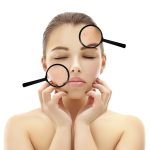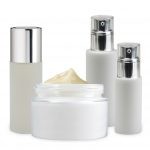Essentials for your Dry Skin
As we enter the summer months, some women suffer with dry skin. It can be irritating and uncomfortab le. Some women suffer with dry skin all year round, however there are various ways to get your dry skin under control. You can start today, here are some effective ways to take charge of your dry skin problems…
le. Some women suffer with dry skin all year round, however there are various ways to get your dry skin under control. You can start today, here are some effective ways to take charge of your dry skin problems…
Skin is a huge part of your body, in more ways than one. Your skin is the largest organ in your body and makes up over 16 percent of your body weight. Your skin is a protective barrier, but sometimes it needs protection from your daily lives, stresses and even seasonal onslaught. We all want soft, supple, hydrated and healthy skin however, because of our lifestyles, we suffer with dry and flaky skin.
If you are going to be able to protect your skin, you will have to know what is causing your dry skin and what ways can help avoid these scaly outbursts.
Why do we have dry skin?
Your skin is made up of a network of skin cells, oils and other substances which keep your skin healthy and moist. When these elements are lost, then your skin becomes unhealthy, scaly, flaky and dry.
Irritation is a sure sign that you have dry skin, so if you fall into this category, then this information is  perfect for you;
perfect for you;
What conditions cause dry skin?
Seasonal changes can cause dry skin, so going through the summer months, winter months and climates with low humidity can cause your skin to lose water and its essential oils. Even indoor heating can effect the natural balance of your skin. However, some individuals can be prone to dry skin due to certain medical conditions;
Hormonal Changes
As the body endures hormonal changes, you may find that your skin can become flaky, dry and raised. If you are on the contraceptive pill, you may experience changes in the amount of oil production in your skin. Some have an increase in the amount of oil, which can lead to the pores becoming blocked which in turn can lead to adult acne. However, at the opposite side of the scale, some women lose the essential oils and water in their skin, leadi ng to irritation and dry skin.
ng to irritation and dry skin.
Keratosis Pilaris
Keratosis Pilaris is an inherited skin condition which effects 1 in 3 individuals in the UK. Normally found in adolescents, this dry skin condition can also be found in adults. Keratosis Pilaris causes tiny red bumps on the skin which usually occur on the tops of the thighs or the tops of the arms. These tiny red lumps are dead skin cells which can make the skin feel rough and itchy.
Atopic Dermatitis
There are many people from all over the world who suffer with atopic dermatitis which is quite a common type of eczema. Atopic dermatitis presents itself as small itchy patches on the skin. As we are only human beings, we tend to scratch our itch and this could in fact make atopic dermatitis much worse. As we scratch, these patches can become sore, raised, red, cracked and can even weep. Atopic dermatitis is more likely to be found on an individual who is more prone to allergies such as hay fever and even asthma.
Diabetes or Kidney Disease
Individuals who have these diseases may find that they have dry skin on their legs which is caused by poor circulation. The blood carries essential nutrients to the skin, so when the circulation becomes limited, not enough nutrients can reach the skin and therefore the skin becomes dry and damaged.
Thyroid Disease
One of the very first symptoms that can occur when an individual is going through thyroid disease, is dry skin.
How can we get our skin back on track?
Moisturising your skin is the key to preventing and reducing dry skin. Depending on the severity of your dry skin, you should apply your moisturiser once in the morning and once at night before you go to bed.
Sometimes your everyday moisturiser may not be enough to rejuvenate your skin, so investing in a slightly better moisturiser may be the answer for you.
The Nuriss Skin Care Clinic offers a wide range of moisturisers which have been created especially for you by skin care experts.
If however, you find that ‘over-the-counter’ moisturisers are not even touching the surface of your dry skin, then contact your health care professional, who will be able to prescribe you something a little stronger, which will break down the hard layer of dry skin which is blocking the moisturiser from getting deep within the layers of the skin.
Other ways of treating your dry skin:
- Use a chemical-free soap.

- Use a moisturising body wash in the shower.
- Take warm showers instead of hot showers.
- Place a humidifier in your house to add some moisture into your environment.
- Eat a balanced diet, rich in healthy oils, fats and protein which include; avocado oil, olive oil, nuts, fish and meat.
With enough care and attention, you can get your sore, irritated, scaly and dry skin back to being healthy and full of moisture, ready to fight another day.

